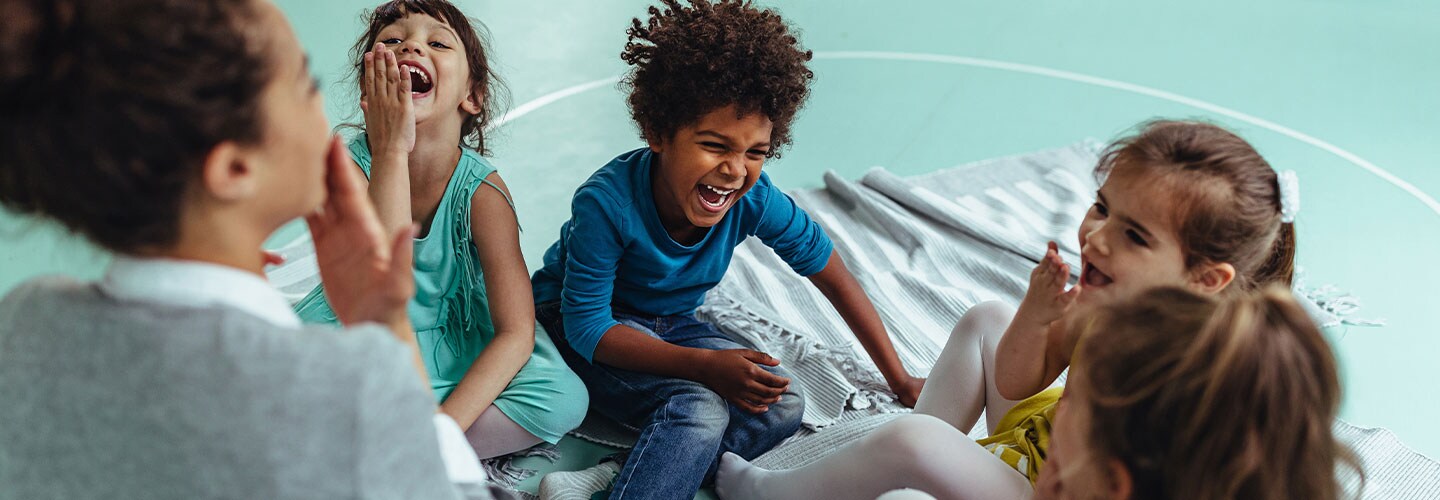
- Language teaching
- Teaching trends and techniques
3 creative routines to help foster a safe learning environment
“The world is undergoing revolutionary changes, we need a revolution in education too.” - Creative Schools, Ken Robinson
In February 2006, the late Sir Ken Robinson delivered a talk at TED titled: “Do schools kill creativity?”. This was some years ago and time seems to have stood still in education since then.
Creativity is a key 21st century skill. Our young students need to harness it in order to be successful in further education and the workplace, especially now that technology is advancing at such a rapid rate.
So what can we do to encourage creativity and create a safe learning environment? I’ll take you through three activities that I use with my own students to help them flourish.
Clear and structured objectives
To nurture and encourage creativity in the classroom, it is important to have clear, well-structured objectives and routines that give students a safe learning environment. Here’s a breakdown of a few you can try in your classroom.
1. Monday activity
As part of your routine, do something different every Monday and have your students guess what it is. For example, you could change your earrings or only wear one. You could shave your mustache, wear a hat, or do something less obvious.
Students should participate too, so have them do something different every week. Select a student in the class and everyone must guess what has changed that Monday.
This activity is designed to encourage students to pay attention to each student in the class and notice things about them during the week. At the same time, it will encourage them to be creative and think about how to do things differently and mix up their own routines.
2. Friday team building challenge
Every Friday, my class play a team building challenge activity which helps them set and follow rules, be respectful to one another, and work and play with students from different circles.
Here’s a simple, energetic team building activity you could try:
- Have students call out all the new vocabulary words they learned during the week. Write them on the board as they do so.
- Split the class into teams of four or five students.
- Tell them they have to use their bodies to spell each word (if there are lots of words, pick the top three). Wipe the word off the board and explain that they can stand up, lie down, and use their arms and legs – but they should work together to form the shapes of the letters. The first team that correctly spells the word you dictate wins a point!
3. "Hurray, I failed” activity
The final activity is all about celebrating failure. Start by putting students in a circle or a line, and have them each name a color out loud. If someone repeats a color or takes longer than five seconds to answer, they must stand up, dance, and shout “hurray, I failed!” as loudly as possible.
You can select any topic – such as nouns, countries, or, even better, your students’ interests. The intention is to create a safe learning environment for your class, where students feel supported and being wrong is fun and okay. This will enable students to participate in class without fear of judgment or criticism.
Try it out until your students become comfortable with dancing and 'hurraying' in front of everyone in the group.
This activity has yielded fantastic results with groups of people I’ve worked with, regardless of their age group (young, old, junior high). Participants may feel silly or shy, until one participant starts doing it for fun, and then the rest of the group will start feeling comfortable with being wrong. They will realize it’s okay, and the exercise will start to flow with greater ease.
If your group is shyer or your students are more introverted, you can ask the person who makes a mistake to wear a silly hat – until the next person fails.









